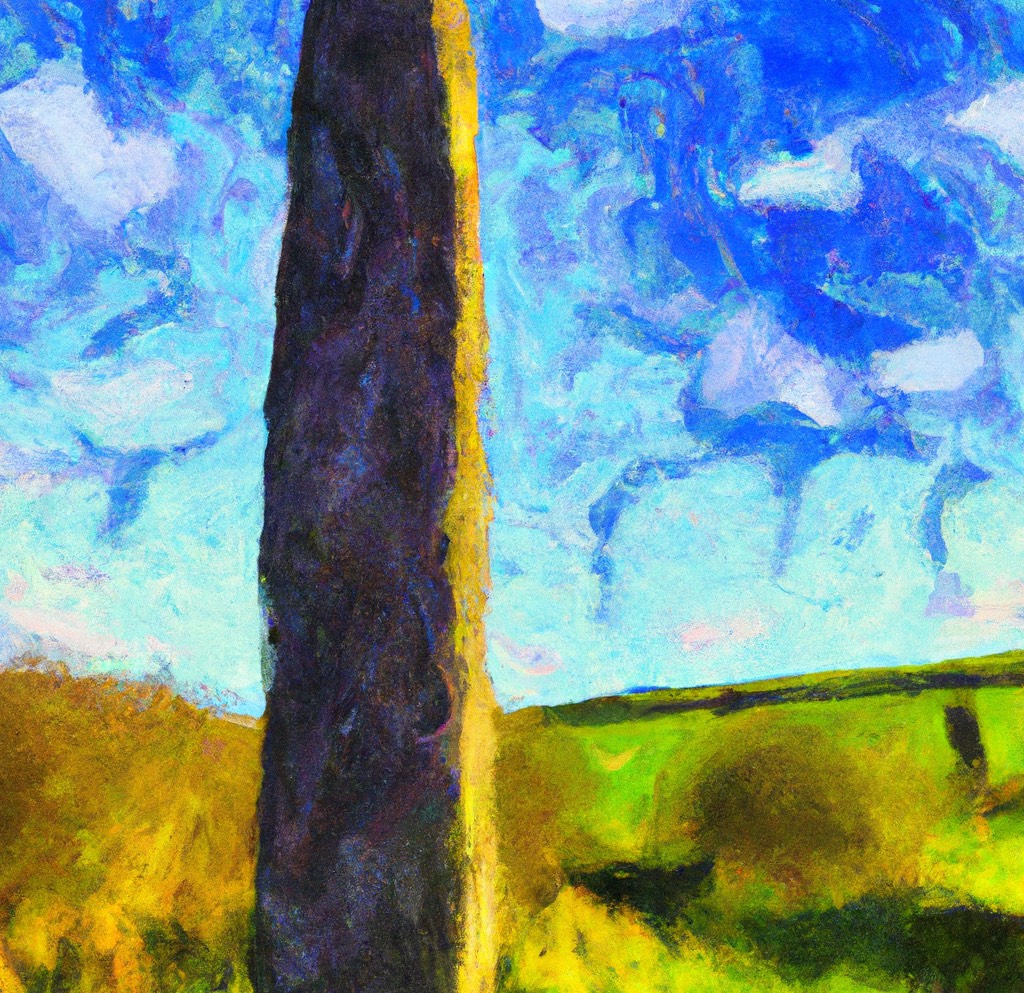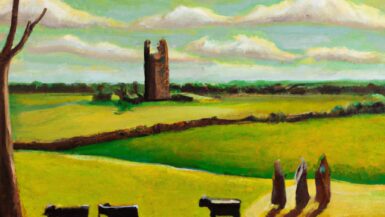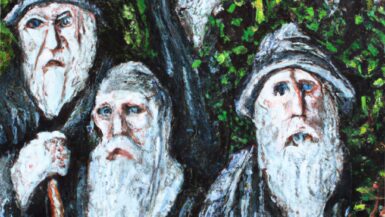Among the most distinctive features of Celtic heritage is the Ogham alphabet, a script that adorned ancient Irish stones and manuscripts. Representing an early form of the Irish language, the Ogham script offers invaluable insights into ancient Celtic culture and communication.
Origins and History: Ogham’s Mysterious Beginnings
Ogham is believed to date back to the 4th century AD, with its origins shrouded in both history and legend.
- Ancient Chronicles: Some early manuscripts suggest that Ogham was created by the scholarly class of Druids as a secret form of communication.
- Practical Beginnings: Some historians propose that Ogham’s origins were more pragmatic, evolving from tally marks used for trade or record-keeping.
Structure and Characters: Understanding the Basics
The Ogham alphabet consists of 20 primary characters, called “feda.” Each character is a combination of strokes intersecting or lying near a central line.
- Form: The characters are typically arranged in four groups of five, often displayed vertically.
- Additional Characters: As the language evolved, five more characters, called the “forfeda,” were added, particularly to account for sounds in foreign words.
Physical Representation: The Medium of Ogham Inscriptions
The Ogham script is most commonly found inscribed on stone monuments, although it was also written on wood and other perishable materials.
- Stone Monuments: Often seen on boundary markers or memorial stones, the Ogham inscriptions on these monoliths can be read bottom-to-top.
- Manuscripts and Wood: While less enduring than stone, Ogham was also inscribed on wooden staves, used perhaps for religious, educational, or record-keeping purposes.
Usage: From Common Language to Sacred Script
Over time, the Ogham alphabet transitioned from its initial, possibly everyday, usage to more specialized functions.
- Memorial Inscriptions: Many Ogham-inscribed stones are memorials bearing names, perhaps of tribal leaders or warriors.
- Sacred and Mystical Associations: As Christianity spread in Ireland, Ogham was sometimes linked to religious or mystical practices. Some believe Druids may have used it for divination or ceremonial purposes.
Ogham’s Relationship with the Irish Language
Ogham is a testament to the early forms of the Irish language, known as Primitive and Old Irish.
- Linguistic Evolution: The transition from Primitive to Old Irish saw the addition of new Ogham characters to represent evolving language sounds.
- Preserving Early Irish: Ogham inscriptions provide valuable linguistic data, helping scholars trace the evolution of the Irish language and its dialects.
Ogham in Mythology and Legends
Irish mythology often intertwines with factual history, and Ogham is no exception.
- Ogma, the God of Eloquence: Legend says Ogham was invented by Ogma, a god of the Tuatha Dé Danann, to communicate secretly during battle.
- Bards and Druids: Stories often attribute the use of Ogham to these ancient scholars for magical and educational purposes.
Ogham Today: Modern Interest and Revival
Though no longer a mainstream method of communication, the Ogham script has seen a revival of interest.
- Neo-paganism and Druidry: Modern spiritual movements, seeking connections with ancient Celtic traditions, sometimes incorporate Ogham into their practices.
- Cultural Symbols: Ogham has become a symbol of Irish heritage, often used in jewelry, art, and tattoos.
- Linguistic and Archaeological Studies: The study of Ogham stones and inscriptions continues, with scholars hoping to glean more insights into ancient Irish society, language, and trade connections.
Sites and Collections: Where to Experience Ogham
For those keen to experience the magic of Ogham firsthand, several historical sites and museums showcase these inscriptions.
- University College Cork: Home to the Ogham Stone collection, it is a must-visit for enthusiasts.
- The National Museum of Ireland: Offers a selection of Ogham stones and related artifacts.
- Countryside Excursions: Many Ogham-inscribed stones still reside in their original locations, scattered across the Irish landscape.
Delving into the history of the Ogham alphabet takes one on a journey through ancient Ireland, its language, legends, and daily life. As scholars continue to study these inscriptions, and as enthusiasts keep the script alive in modern culture, Ogham remains a vibrant link connecting us to the rich tapestry of Celtic history.






Leave a reply